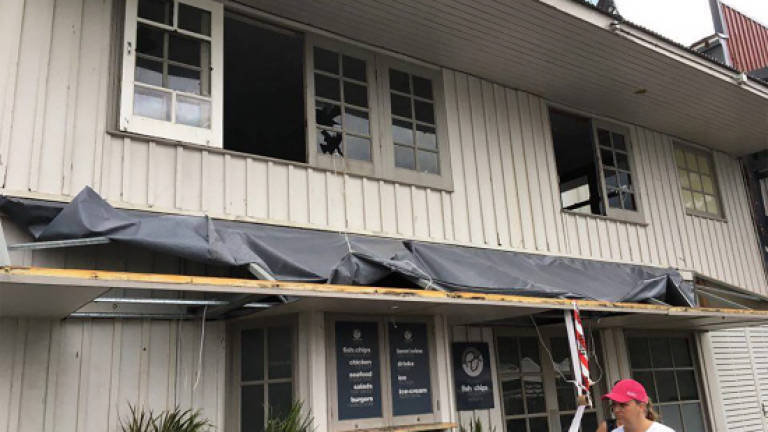Military mobilises to help cyclone-ravaged Australian region

AYR, Australia: Towns remained cut off in northern Australia Wednesday after being pummelled by a powerful cyclone that washed battered yachts ashore and ripped roofs off houses, as the military mobilised to help with the clean-up.
The category four storm slammed into the coast of Queensland state between Bowen and Airlie Beach on Tuesday afternoon, packing destructive winds and devastating some of the region's tourist hotspots.
It has since been downgraded to a tropical low but the Bureau of Meteorology still warned of damaging wind gusts with "intense" rain, sparking flooding fears as river levels rise.
"This rainfall is likely to lead to major river flooding over a broad area this week," it said.
Some areas have been drenched in "a phenomenal" 1,000mm of rain in just 48 hours — the equivalent of half a year's worth, according to the weather bureau.
Roads to the towns of Bowen, Airlie Beach and Proserpine were inaccessible, with more than 60,000 homes without power and communications down in many areas. But no deaths were reported and only one significant injury — a man crushed by a collapsing wall.
Emergency crews began assessing the damage but blocked roads and flash flooding hampered efforts, as soldiers, military helicopters and planes started deploying to help restore infrastructure and supply emergency food, water and fuel.
Queensland Premier Annastacia Palaszczuk flew by helicopter to Bowen, which bore much of the brunt, and said mass evacuations helped save lives.
Tens of thousands of people moved to higher ground or cyclone shelters or left the region before Cyclone Debbie made landfall.
"Thankfully the extent of the damage here is not as widespread as we first anticipated, but of course there are lots of trees down ... we've seen the impact of roofs being blown off people's houses," she said.
The premier was due to head to the town of Proserpine where "we expect there to be some more widespread damage".
'Worst 24 hours'
Dawn broke on scenes of devastation.
Pictures posted on social media showed a light plane flipped upside down, yachts washed ashore, power poles down and trees fallen on houses.
Whitsunday Regional Council mayor Andrew Willcox described Bowen as "like a war zone".
"This beautiful seaside town is now half-wrecked but we will rebuild," he told Channel Nine television.
In the mining town of Collinsville, residents said the storm was emotionally draining, with winds raging for hours as they cowered inside.
"I'm shattered emotionally and physically. I've gone through the worst 24 hours I've experienced in my 53 years," a local identified only as Julie told the Australian Broadcasting Corporation.
Wind gusts of up to 270kph were reported near Debbie's broad core.
On a brighter note, a baby girl was born at an ambulance station on the Whitsunday islands as the storm raged outside.
"You know, out of all of this, to see a little miracle, I think brings a smile to a lot of faces," said Palaszczuk.
Debbie 'a catastrophe'
Great Barrier Reef islands popular with foreign tourists were among the worst hit.
Daydream Island Resort said it sustained significant damage, including to its jetty and accommodation wings.
"Conditions were extreme with heavy rainfall and strong wind gusts causing damage to the resort and surrounds," it said in a statement, adding that all guests had been accounted for but fresh water was running out.
Having lived through cyclones before, many people were prepared and boarded up homes after being warned to expect the worst weather in the state since Cyclone Yasi in 2011, which ripped houses from their foundations and devastated crops.
Yasi, which struck less populated areas, caused damage estimated at Aus$1.4 billion. Debbie has officially been declared a catastrophe by the Insurance Council of Australia, allowing claims from the disaster to be prioritised. — AFP